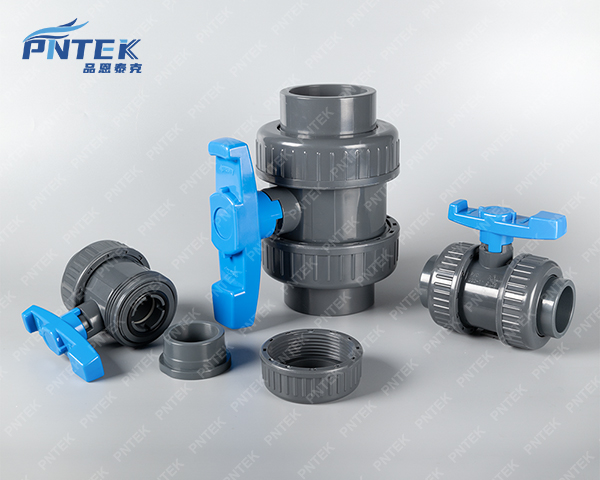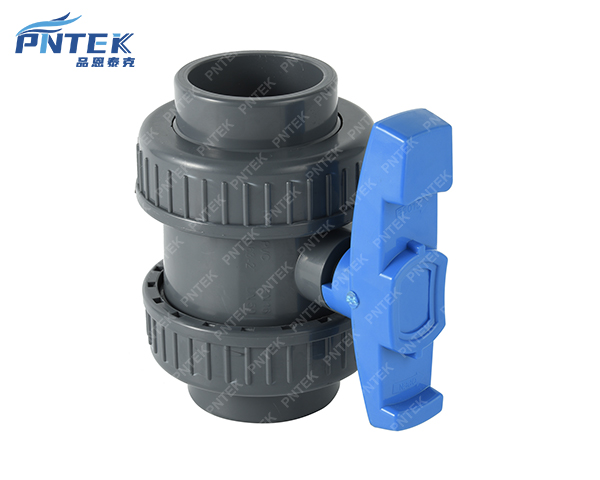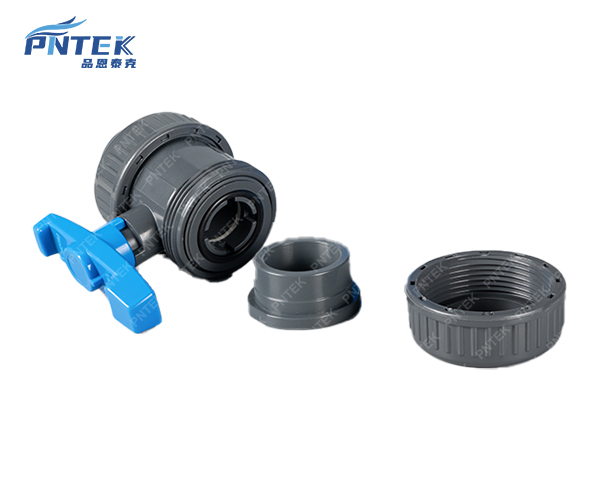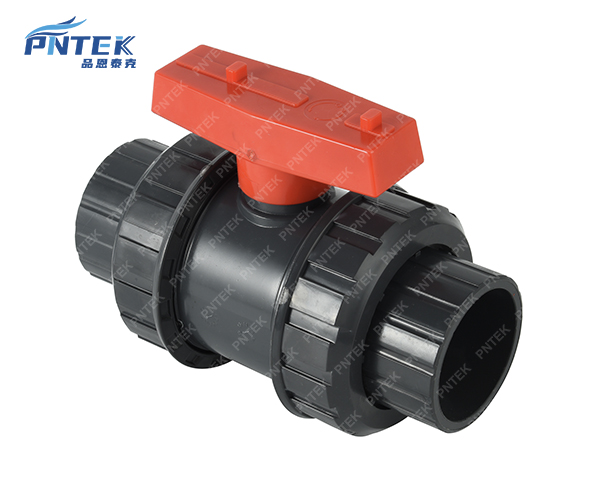A filter in your system is clogged, but the valve is glued in place. Now you must drain everything and cut the pipe just to do routine maintenance, wasting hours.
A union ball valve is a ball valve with threaded connectors, called unions, on each end. These unions allow you to remove the valve body from the pipeline without having to cut the pipe, making repairs simple.

When I talk with professional buyers like Budi in Indonesia, we often discuss “total cost of ownership,” not just the purchase price. A union valve is a perfect example of this. It might cost a little more than a standard valve, but the first time you need to service a pump or replace a filter, it pays for itself many times over in saved time and labor. It’s a smart design that solves a very common and frustrating problem for contractors and maintenance teams. It turns a difficult job into a simple one.
What is the use of union ball valve?
You need to replace a worn-out pump in a tight space. But the valves are cemented directly to it, meaning a messy, time-consuming cutting and re-plumbing job awaits you.
The main use is to connect a valve to a system in a way that allows it to be easily removed. This is perfect for isolating equipment like pumps, filters, and tanks for maintenance or replacement.

The union ball valve is the plumber’s best friend. Its design is all about planning for the future. Any piece of mechanical equipment in a fluid system will eventually need to be serviced or replaced. A union valve makes that future job incredibly easy.
1. Isolating Equipment
Think about a swimming pool system. You have a pump and a filter. By installing union ball valves before and after the pump, you can simply shut the valves, unscrew the unions, and lift the pump right out. You do not have to drain the whole system. The same logic applies to irrigation manifold valves, aquaculture tanks, or any industrial process that uses modular equipment.
2. Simplifying Valve Maintenance
Even the best valves can wear out after years of heavy use. With a union valve, you can replace the valve’s core in minutes. You unscrew the unions, lift the old valve body out, drop a new one in, and tighten the unions. The pipe ends stay perfectly aligned and untouched. For Budi’s contractor clients, this speed is a huge competitive advantage.
3. Reducing Downtime
In an industrial or commercial setting, system downtime costs money. A union valve can reduce a repair that takes several hours down to less than 30 minutes. This is because you avoid cutting, drying, priming, and gluing new pipe and fittings.
What is the difference between a union ball valve and a ball valve?
You see two valves that look similar but have different names: “ball valve” and “union ball valve.” One costs more, and you need to know if the extra price is justified.
All union ball valves are a type of ball valve. The difference is the body construction. A standard “compact” ball valve is a single, solid piece, while a union ball valve is a three-piece design that can be taken apart.

The core function of both is the same: a ball with a hole in it turns to stop or start the flow. The difference is all about maintenance. I always explain to partners that they should think of them as “permanent” versus “serviceable.” If the valve is on a long, straight pipe that will never be changed, a compact valve is fine. If the valve is next to any piece of equipment, the union valve is the professional choice.
| Feature | Compact Ball Valve | Union Ball Valve |
|---|---|---|
| Construction | One-piece, molded body | Three-piece body (center body, two union ends) |
| Maintenance | Cannot be repaired. Must be cut out and replaced. | Center body can be removed and replaced without cutting pipe. |
| Installation | Glued or threaded directly onto the pipe. It is permanent. | Union ends are glued/threaded. The valve body can be removed. |
| Cost | Lower initial cost. | Higher initial cost, but lower lifetime cost. |
| Best Use | Long pipe runs, applications where no service is expected. | Near pumps, filters, tanks, or anywhere service is likely. |
Choosing the right one is a matter of foresight. The union ball valve is an investment in future convenience and savings.
What does a union valve do?
You hear the term “union” in plumbing and see the large nuts on the valve. You are not sure what their mechanical purpose is or how they create a reliable seal.
A union joins two pipes but also allows them to be easily disconnected. The large nut on the union pulls the two pipe ends together, and an O-ring between them creates a perfect, reusable seal.

The magic of a union valve is not the valve itself, but the clever fitting it is built around. A standard PVC coupling is permanent; once you glue it, the only way to take it apart is with a saw. A union provides a strong, pressure-rated connection that can be taken apart and put back together again and again.
How a Union Works
A pipe union has three key parts:
- A Male End: This piece has external threads.
- A Female End: This piece has a flange that the male end seats against.
- A Union Nut: This large nut slips over the female end and threads onto the male end.
When you tighten the nut, it draws the two ends together. We place a durable EPDM O-ring in a special groove between the two faces. The pressure from the nut compresses this O-ring, creating a watertight seal that can hold an incredible amount of pressure. On a union valve, the valve body itself has the male and female ends built-in, and the union nuts connect them to the pipe adapters.
What is a true union ball valve?
You see valves marketed as “union” and others as “true union.” You wonder if this is just marketing language or if there is a real, functional difference you should know about.
A “true union” ball valve has union connections on both sides of the valve. This design allows the main valve body to be lifted straight out of the pipeline for maintenance by simply unscrewing the two nuts.

The word “true” is important here. It defines the quality and functionality of the design. While rare, you can sometimes find “single union” valves, which only have a union on one side.
With a single union valve, you can only disconnect one end of the valve. The valve is still attached to the other pipe. To remove it, you would have to bend the pipe out of the way, which is often impossible and puts stress on other joints. It defeats the whole purpose of easy service.
A true union design, which is the standard we produce at Pntek, ensures maximum serviceability.
| Feature | True Union Valve (Two Unions) | Single Union Valve (One Union) |
|---|---|---|
| Removability | Valve body lifts straight up and out. | Valve must be pivoted or bent out of the pipeline. |
| Maintenance | Fast and easy. No stress on pipes. | Difficult and puts stress on other fittings. |
| Pipe Alignment | Pipes remain perfectly aligned during service. | Can cause pipe misalignment issues. |
| Our Recommendation | The only professional choice. | Not recommended for most applications. |
When Budi orders union valves from us for his clients in Indonesia, he knows he is getting true union valves. We believe in providing solutions that work perfectly in the real world, and that means a design that offers no compromises on serviceability.
Conclusion
A true union ball valve is a smart investment. It allows for fast, easy maintenance and repairs, saving significant time and labor costs over the life of the system.
Post time: Sep-12-2025




